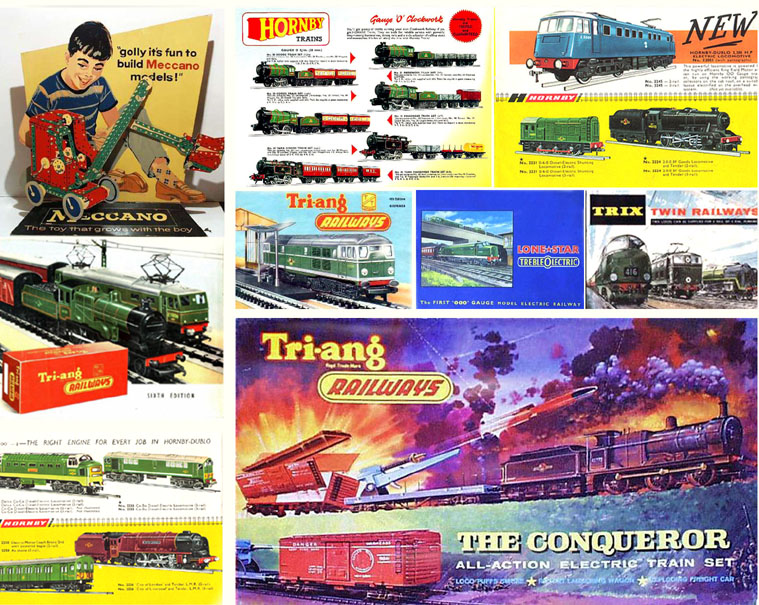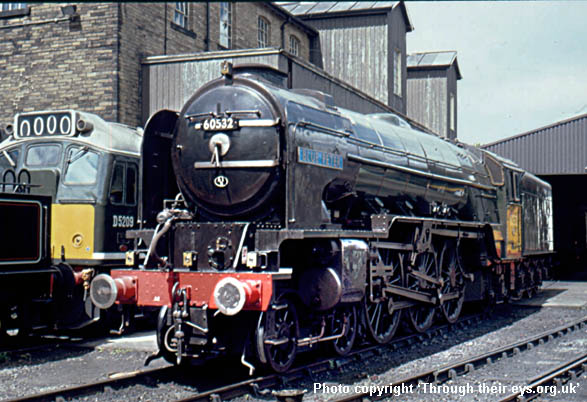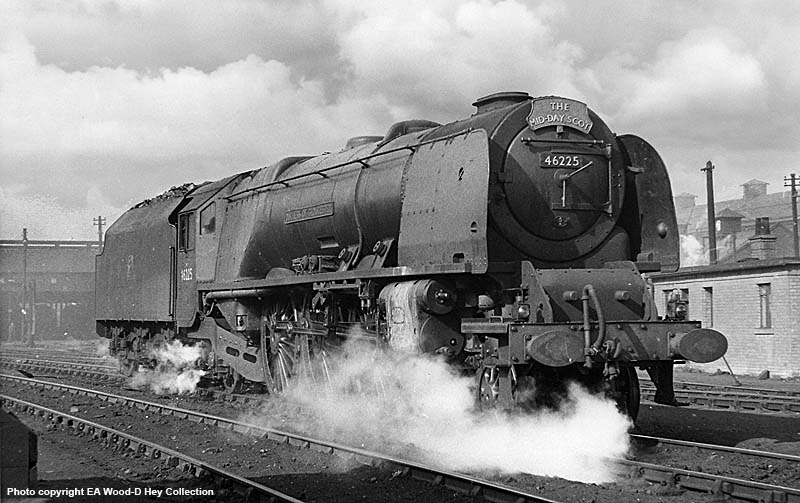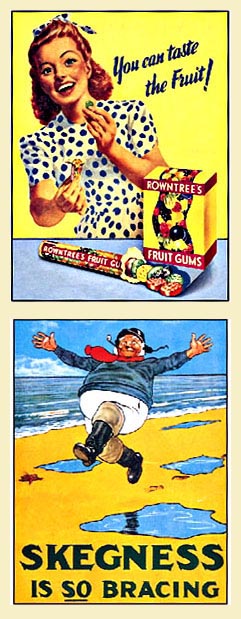 At the risk of sounding like that curmudgeonly geezer from 'One Foot In The Grave', the kids of today don't realise how lucky they are! It seems the spirit of self-reliance we enjoyed as children during the post-war Fifties means very little to today's youngsters, who are only interested in playing computer games until it's way past their bedtime.
At the risk of sounding like that curmudgeonly geezer from 'One Foot In The Grave', the kids of today don't realise how lucky they are! It seems the spirit of self-reliance we enjoyed as children during the post-war Fifties means very little to today's youngsters, who are only interested in playing computer games until it's way past their bedtime.
Back in the Fifties, the 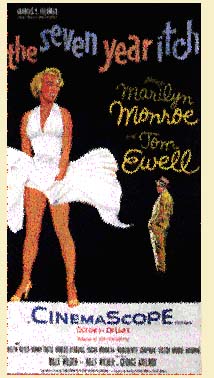 games we played burned up all our energy, so we were dead beat by the end of it. For example, I pretended to be the matinee idol, Wild Bill Hickock, who, armed with only a toy cap-gun (and a vivid imagination) chased a tribe of renegade Apaches through the local woods, then tied them up with invisible rope before escorting them back to a makeshift reservation in the concrete air raid shelter at the bottom of the garden. Hardly politically correct, I know, but it was only a 'pretend' game - and, I'm ashamed to say, that's not all I pretended...
games we played burned up all our energy, so we were dead beat by the end of it. For example, I pretended to be the matinee idol, Wild Bill Hickock, who, armed with only a toy cap-gun (and a vivid imagination) chased a tribe of renegade Apaches through the local woods, then tied them up with invisible rope before escorting them back to a makeshift reservation in the concrete air raid shelter at the bottom of the garden. Hardly politically correct, I know, but it was only a 'pretend' game - and, I'm ashamed to say, that's not all I pretended...
It's well known that children are consummate actors, so kidding my seven year-old schoolmate, 'Dublo Dave', into believing that I was his closest friend is something I am not proud. I knew all along that I was playing with him for all the wrong reasons, but as he had the biggest Hornby Dublo 3-rail layout I'd ever clapped eyes on, toadying up to him came quite naturally to me. His bedroom was a veritable Beatties and Pendon Museum rolled into one, complete with stations, junctions, viaducts, a Meccano girder bridge, tunnels, a double-track main line running around the entire floor - plus a couple of tank engine goods sets, two 'Silver Kings', three 'Duchess of Montroses' and enough tin-plate coaching stock to fill five main line platforms...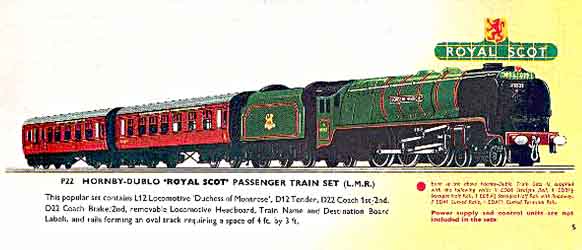
(Above-Right) I am not affiliated with any of the products on this site, and all pictures of Fifties toys are 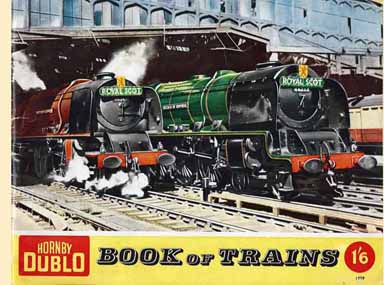 copyrighted by, and the property of, the manufacturers and their successors, including the range of post-war year toys made by Meccano at the company's Binns Road factory, Liverpool. I include these images because the range of Hornby trains, Dinky Toys and Meccano sets gave immense pleasure to countless thousands of small boys during the Fifties.
copyrighted by, and the property of, the manufacturers and their successors, including the range of post-war year toys made by Meccano at the company's Binns Road factory, Liverpool. I include these images because the range of Hornby trains, Dinky Toys and Meccano sets gave immense pleasure to countless thousands of small boys during the Fifties.
This illustrations shows the 'Royal Scot' Passenger Train set, comprised of the Duchess of Montrose loco and tender, two coaches, removable locomotive headboard, train destination board labels, and rails forming an oval of track requiring a space of 4ft by 3ft. I do recommend visiting the webrings run by enthusiasts, who have formed an on-line community linking individual devotees together - a good place to start is Graeme Eldred's 'Binns Road' website - nostalgic stuff!
(Below) The Eastbank Model Railway Club in Glasgow, along with Southport Model Railway Society, have recently rescued a Meccano-commissioned Hornby Dublo two rail demonstrator train set from being ignominiously disposed of in an industrial waste bin. In view of the historical origin of the train set and the subsequent location from where it was recovered, the name 'Binns' seems most appropriate. The layout was in a somewhat distressed condition with most of the original components absent or damaged, however restoration to its original 1960's condition has now been completed. This involved the cleaning and repainting of the baseboard, the replacement of damaged or missing track components and a complete refurbishment of the electrics and control system. All the appropriate scenic accessories such as buildings, stations and operating signals were missing and have been replaced. Click here to visit the site.
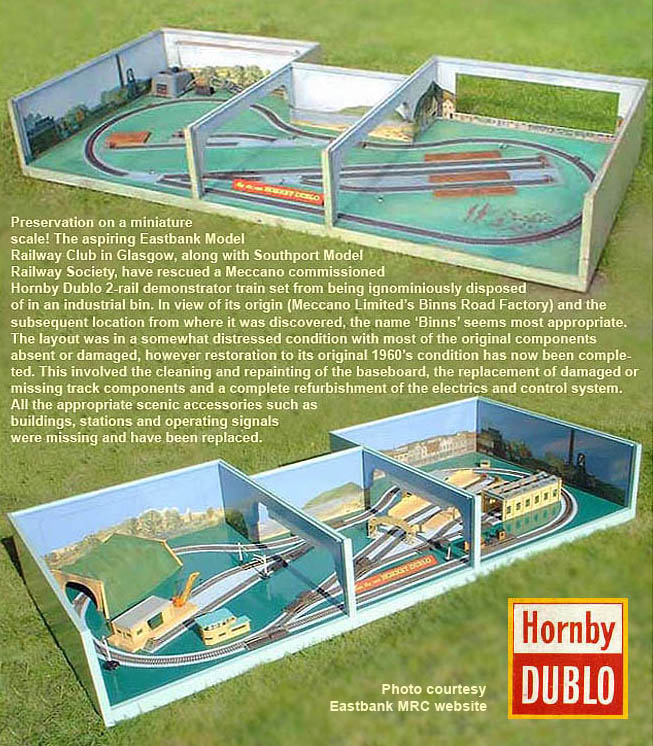
Was I jealous of 'Dublo Dave'? You bet. I held a jaundiced view of anyone in possession of anything bigger and better than me.
However not everything was as it seemed - you see, Dave was a spoiled, little rich kid 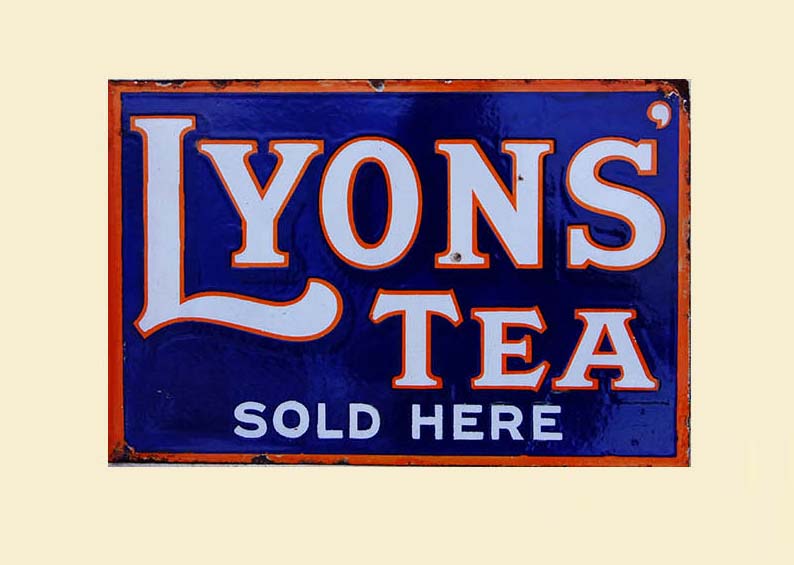 and I wouldn't have swapped places with him for anything in the world. His temper tantrums revealed a much more complex and disturbing story...it was that of a small boy caught in the crossfire in an acrimonious divorce between his parents.
and I wouldn't have swapped places with him for anything in the world. His temper tantrums revealed a much more complex and disturbing story...it was that of a small boy caught in the crossfire in an acrimonious divorce between his parents.
Now it must be pointed out that divorce was practically unheard of in the Fifties (1 in 500 couples then split up compared with 1 in 3 today) so it didn't matter how many 'Duchess of Montrose' train sets his parents lavished on him, it could never compensate for his misery.
Even so, 'Dublo Dave' had pretty much everything that a small boy could wish for - a TV in his bedroom, a toy garage full of Dinky cars; a Raleigh bike with 3-speed gears, and a Lone Ranger outfit complete with white hat, black mask, silver spurs and a double holster with silver cap guns. And what did I have to shoot with?...a puny bow and arrow!...no prizes for guessing who played his downtrodden sidekick, Tonto then? 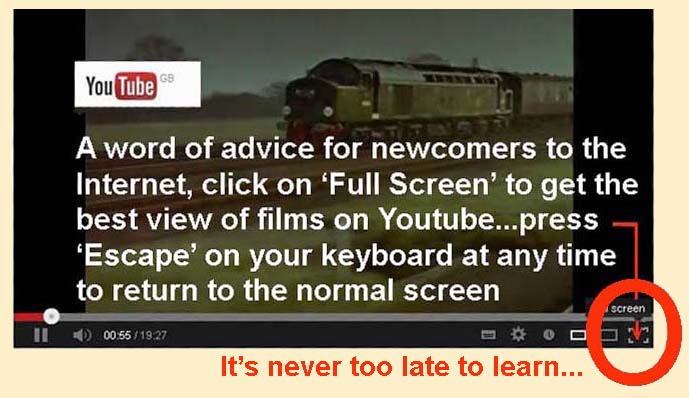 It was ample evidence of the class system at work, and miffed at playing a subservient role in his scurrilous games of one-upmanship, I rebelled against the little upstart and plonked myself down in front of his television in the hope of catching the famous 'London to Brighton in 4 minutes' intermission.
It was ample evidence of the class system at work, and miffed at playing a subservient role in his scurrilous games of one-upmanship, I rebelled against the little upstart and plonked myself down in front of his television in the hope of catching the famous 'London to Brighton in 4 minutes' intermission.
Click here to see the BBC's updated version of the London to Brighton run 1953-1983 on YouTube... You'll go bog-eyed!
As for today's childhood influences? The barmy politically-correct pretences introduced in recent years has spelled the end of out-of-date corporal punishment, and unruly kids no longer get a metaphorical 'rap over the knuckles' from teachers or parents for fear of reprisal from the namby-pamby do-gooders in authority. This new-style liberalism has effectively removed all remaining restraints on a child's upbringing and anti-social behaviour is resonating both on the the street and in the home.
Well, if somebody has to be held accountable, then the regulators of television must take some of the blame. Graphic scenes of violence, gratuitous sex and swearing not only desensitizes children to what should be normal, it changes their perception later on in life.
At the same time, one shouldn't trivialise the effect that glitzy TV commercials have on hard-up parents. After all, not everyone can afford the latest fashionable accessory or digital thingamajigs that children demand.
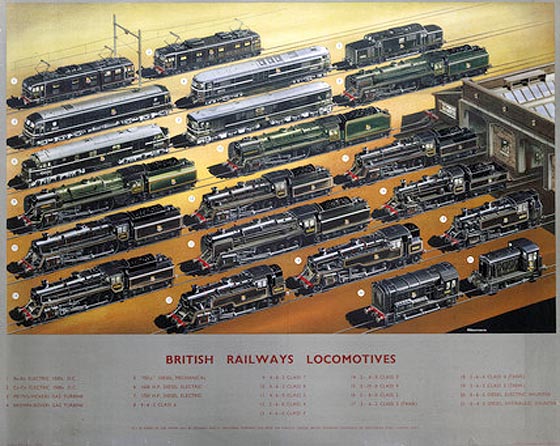
(Above-Below) Back in the late Fifties, the most iconic railway poster for train spotters had to be this BR poster featuring a line up of BR's new Standard steam classes and pioneer diesel and electric locomotives. The design of the painting by AN Wolstenholme closely resembles a page from a model railway catalogue. (Below) Back in the Fifties, every boy dreamed of owning a train set. The main contenders in 00 gauge were Hornby Dublo; Trix Railways, and Tri-ang Railways (a relatively newcomer to the hobby) launched in 1952. 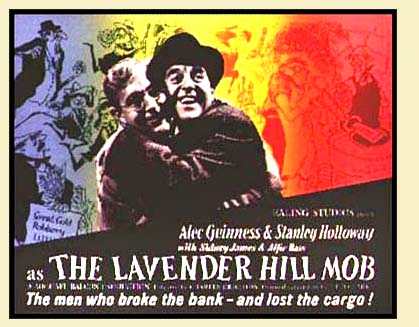 The Trix and Hornby Dublo 3-rail models were made up of die-cast metal locomotives and lithographed tinplate stock, whereas Tri-ang exploited the then new fangled technology of plastic injection moulding. In those days, plastic was widely regarded as cheap and nasty, yet the insulating properties of plastic enabled the company to develop a more authentic 2-rail system of current collection that ultimately turned the hobby on its head. Nonetheless, the Hornby Dublo die-cast models will always be associated with quality engineering and, like the old Trix and Tri-ang boxed models, are very collectable today. It's interesting to see the cheap prices in old catalogues. But don't be fooled! After multiplying the 1950's price by a factor of at least ten to calculate today's equivalent one must also take in account contemporary living standards. A family's disposable income was much lower in the Fifties than it is today - and £5 (roughly £90 nowadays) was a lot of money. If you like old model trains, I suggest visiting a super website 'Hornby Railway Collectors Association' - click here.
The Trix and Hornby Dublo 3-rail models were made up of die-cast metal locomotives and lithographed tinplate stock, whereas Tri-ang exploited the then new fangled technology of plastic injection moulding. In those days, plastic was widely regarded as cheap and nasty, yet the insulating properties of plastic enabled the company to develop a more authentic 2-rail system of current collection that ultimately turned the hobby on its head. Nonetheless, the Hornby Dublo die-cast models will always be associated with quality engineering and, like the old Trix and Tri-ang boxed models, are very collectable today. It's interesting to see the cheap prices in old catalogues. But don't be fooled! After multiplying the 1950's price by a factor of at least ten to calculate today's equivalent one must also take in account contemporary living standards. A family's disposable income was much lower in the Fifties than it is today - and £5 (roughly £90 nowadays) was a lot of money. If you like old model trains, I suggest visiting a super website 'Hornby Railway Collectors Association' - click here.
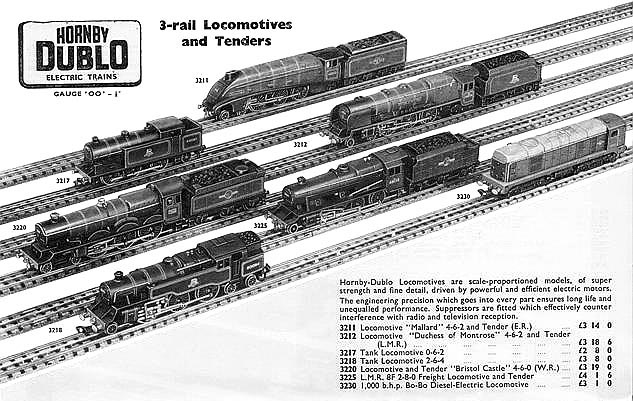
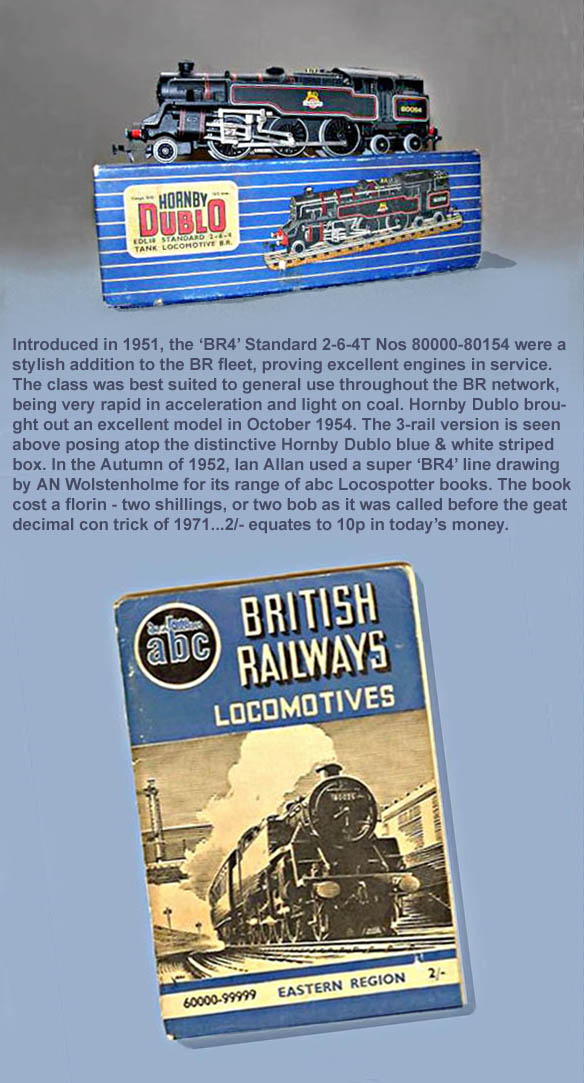
We didn't have a TV at home, so even a potter's wheel and an inanimate test card came as something of a bonus. I'm harking back to the days when television was still in its infancy and BBC broadcasts were 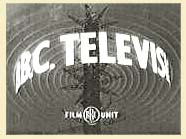 confined to an area within London's 'Ally Pally' - a forty mile radius of Alexandra Palace. It wasn't until 1951 that television began its march across the Midlands to the Sutton Coldfield transmitter, then onwards to the Holme Moss transmitter in the north of England. By 1952, 'H'-shaped TV aerials were sprouting up on rooftops in Scotland, South Wales and the West Country.
confined to an area within London's 'Ally Pally' - a forty mile radius of Alexandra Palace. It wasn't until 1951 that television began its march across the Midlands to the Sutton Coldfield transmitter, then onwards to the Holme Moss transmitter in the north of England. By 1952, 'H'-shaped TV aerials were sprouting up on rooftops in Scotland, South Wales and the West Country.
Needless to say, the prospect of owning a TV became everyone's dream, but as the BBC hierarchy considered regional accents inappropriate (self-appointed custodians of public morals) most children's programmes seemed rather 'oity-toity' until 1955 and the Independent Television Authority (ITA) was launched.
Thanks to the impact that ITA made, the number of television sets shot up to five million, with both channels transmitting just fifty hours of viewing per week, starting the evening schedules at 7pm and ending the night with the national anthem at a daringly late 11pm...
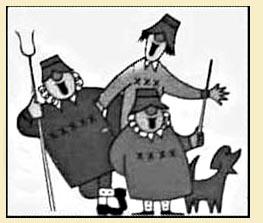 The new medium of television also spawned a major merchandising industry. In 1954, the most popular children's toys included Andy Pandy jigsaw puzzles and Flowerpot Men painting books, whilst Sooty's toy xylophone became the best selling toy of the year.
The new medium of television also spawned a major merchandising industry. In 1954, the most popular children's toys included Andy Pandy jigsaw puzzles and Flowerpot Men painting books, whilst Sooty's toy xylophone became the best selling toy of the year.
After the Queen's Coronation in 1953, the number of people watching the 'goggle box' increased to more than 10 million, but viewers only had BBC transmitters to tune into until Saturday, September 22nd 1955 when the Independent Television Authority (ITA) was born. On the opening night, the BBC fought back with 'The Donald Duck Story', but the wireless stole all its rivals' thunder with the death in a fire of Grace Archer; one of the leading characters in 'The Archers'.
Gibbs SR toothpaste was the first commercial to be shown on ITV at 8.12pm during a variety show hosted 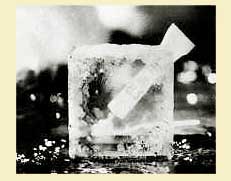 by Jack Jackson. In those days, nobody could have possibly realised that television's influence would accompany us throughout the rest of our lives and, like the 'Hit Parade' launched by the New Musical Express in 1952, it tells us a good deal more about ourselves than any conventional history books.
by Jack Jackson. In those days, nobody could have possibly realised that television's influence would accompany us throughout the rest of our lives and, like the 'Hit Parade' launched by the New Musical Express in 1952, it tells us a good deal more about ourselves than any conventional history books.
We tuned into the 'Watch With Mother' rat-packers: Muffin the Mule; Rag Tag and Bobtail, The Woodentops, and a string-puppet called Andy Pandy, who frolicked around in a picnic box with a rag doll called Looby Loo.
Meanwhile, ITV spearheaded its own children's programmes with Noddy and his Toy-town chums, whilst the BBC signed up the piglet puppet duo, Pinky and Perky, who sang songs in silly, fast-forward voices. But the diva of all children's television characters had to be the loveable, if somewhat mischievous glove-puppet Sooty and his side-kick Sweep.
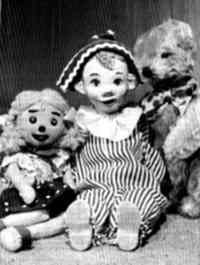
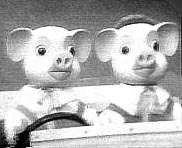
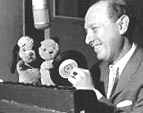
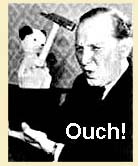 Harry Corbett sprinkles 'oofle dust' on Sooty's magic spell and utters the immortal words 'Izzy wizzy, let's get busy!'
Harry Corbett sprinkles 'oofle dust' on Sooty's magic spell and utters the immortal words 'Izzy wizzy, let's get busy!'
Adored by children everywhere, Sooty was given his own show on BBC television in 1955. By 1957 Sooty was joined by Sweep, a dog with a sausage fetish, followed by Soo, Sooty's panda girlfriend in 1964 - and what a hullabaloo she caused! Despite the permissive Sixties, the rules regarding propriety on children's television were somewhat constrained, and to safeguard the BBC from accusations of sliding down the slippery slope of immorality, Soo and Sooty were not allowed to touch!
But worse still, one of Sooty's props, a harmless balsa wood hammer - Sooty hit Harry on the head with it! - was frowned upon of by the then boss of BBC children's television, Freda Lingstrom, who feared that it might set a bad example to youngsters - and, she was right! A toddler in Lancashire bashed his dad on the head with a real hammer and the poor man was rushed to hospital for stitches to the potentially fatal wound. When asked why he did such a thing, the child replied - 'Well Sooty does it!
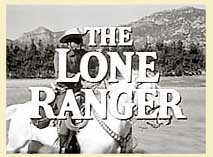 The most popular TV folk heroes of the Fifties, were William Tell (a crack-shot with a crossbow) and the swashbuckling hero, Ivanhoe, who returned from the crusades to find the evil Prince John had seized power from his brother King Richard. Also I mustn't forget Robin Hood, the 12th century outlaw, formerly known as Robin of Locksley, the Earl of Huntingdon who, according to the theme song - 'Was feared by the bad and loved by the good.' But by far the biggest hero, was the masked Lone Ranger, who rode a fiery horse with a speed of light, a cloud of dust - and a hearty 'Hi-ho, Silver, away!' - it was great hip-slapping stuff which cut the journey time home from school by half.
The most popular TV folk heroes of the Fifties, were William Tell (a crack-shot with a crossbow) and the swashbuckling hero, Ivanhoe, who returned from the crusades to find the evil Prince John had seized power from his brother King Richard. Also I mustn't forget Robin Hood, the 12th century outlaw, formerly known as Robin of Locksley, the Earl of Huntingdon who, according to the theme song - 'Was feared by the bad and loved by the good.' But by far the biggest hero, was the masked Lone Ranger, who rode a fiery horse with a speed of light, a cloud of dust - and a hearty 'Hi-ho, Silver, away!' - it was great hip-slapping stuff which cut the journey time home from school by half.
For older children, the adventures of folk heroes William Tell and Robin Hood were huge hits. So too was Sir Walter Scott's swashbuckling Ivanhoe, played by a young Roger Moore. Another favourite was Davy Crockett, a hero of the Alamo, who was born on a mountain top in Tennessee, and became king of the wild frontier - and of course, Dublo Dave had the outfit! It came complete with a fake buckskin jacket, powder horn and the most fashionable accessory for small boys in the 1950s - a Davy Crockett's coonskin hat.

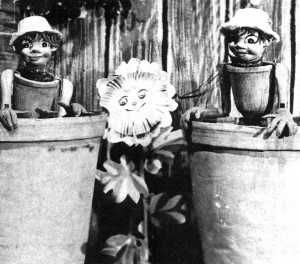
But perhaps the most controversial children's entertainers in the Fifties were the terracotta twosome: Bill and Ben, 'The Flowerpot Men', who had a vocabulary range completely of their own...
'Flobadob,' said Bill.
'Flobalobadob,' said Ben.
'Flobbawhat?' cried parents!
They were aghast; the exchange of gibberish fell a long way short of the high standard they expected of the BBC. Odd then, that nearly fifty years later and TV history should repeat itself with the dim-witted exchanges between Tinky-Winky, Laa-Laa, Po and Dipsy of 'Tellytubbies' fame.
But then, child psychologists will argue that no matter how unfathomable their language may sound, the Tellytubbies' dialogue is understood by pre-school children worldwide...in the same way as 'Klingon' is comprehensible to devoted Trekkies.
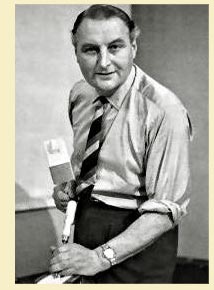 But the Flowerpot Men were not the first to pioneer a trail for others to follow. Today's television gardeners have become something of a British institution with or without a bra, yet the phenomenon started back in 1956 when a green-fingered Percy Thrower pottered about his garden giving couch potatoes handy tips on pruning.
But the Flowerpot Men were not the first to pioneer a trail for others to follow. Today's television gardeners have become something of a British institution with or without a bra, yet the phenomenon started back in 1956 when a green-fingered Percy Thrower pottered about his garden giving couch potatoes handy tips on pruning.
And the do-it-yourself handyman was not forgotten either. In 1956 the BBC's Barry Bucknell championed home improvements for the ham-fisted amateur, whilst a fierce-looking Fanny Craddock over-egged her celebrity guise by donning, of all things, flowing ballroom gowns in the kitchen. She was the first TV cook to bring haute cuisine to the masses, though it wasn't her culinary expertise that appealed most to women, it was her 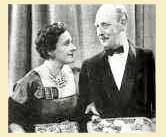 fiery put downs of poor husband, Johnny!
fiery put downs of poor husband, Johnny!
Talk about being under the thumb! I'm harking back to the days when men were men (and women were grateful) so her sideswipes went down a storm in the chiefly male-dominant Fifties.
It reminds me of the unfortunate BBC announcer who, in linking up to the next TV slot, announced - 'I hope your doughnuts turn out like Fanny's!'
Moving swiftly on...
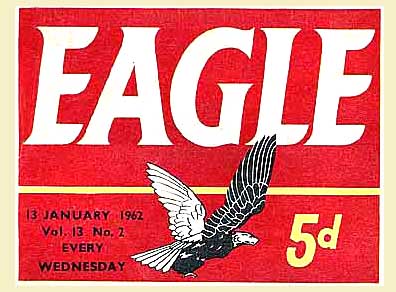 Had it not been for my parents sending me to Sunday School, my interest in art might never have surfaced, yet I'd always had the inclination for drawing and painting, so the simple task of crayoning in picture books of biblical events was not the scholarly drudge that other kids found.
Had it not been for my parents sending me to Sunday School, my interest in art might never have surfaced, yet I'd always had the inclination for drawing and painting, so the simple task of crayoning in picture books of biblical events was not the scholarly drudge that other kids found.
Did children dare complain about the injustices of a six-day working week? What do you think? Kids back then were forbidden to voice an opinion of their own.
The arrival of 'Eagle' was the highlight of the week. The comic had everything a boy could wish for: terrific stories, quality paper, full colour photogravure and the most brilliant artwork. The Eagle's Dan Dare - pilot of the future - was the quintessential British hero; a perfect antidote to all those  terrible 'cape crusader' comics flooding in from America. The web is crammed with Fifties nostalgia, from Dennis the Menace to Beryl the Peril. That's how I came across the Nicholas Hill's 'Eagle' website which is dedicated to artist, Frank Hampson, who created Dan Dare - a nice touch, that.
terrible 'cape crusader' comics flooding in from America. The web is crammed with Fifties nostalgia, from Dennis the Menace to Beryl the Peril. That's how I came across the Nicholas Hill's 'Eagle' website which is dedicated to artist, Frank Hampson, who created Dan Dare - a nice touch, that.
If I had to find a plausible excuse for copying pictures out of 'Eagle' comic as a boy, it was the prospect of following in the footsteps of Leslie Ashwell Wood, one of the main artists employed by the comic.
His 'cutaway' centrespreads left an indelible impression on small boys in the Fifties and a lot of aspiring youngsters were unwittingly influenced by his work.
Also I mustn't forget Vic Welch's covers of Trains Illustrated Annual, or the paintings by C Reginald Dalby who illustrated the Rev W Audrey's 'Thomas the Tank Engine' books. As a small boy at infants school I read all the well-thumbed Thomas the Tank Engine books in the school library; in particular I remember an illustration of Thomas puffing along his branch line at night (a moonlit snowscene) that simply took my breath away. Fast forward thirty-odd years and I painted a disproportionate number of snow scenes - doubtless due to Mister Dalby's influence!
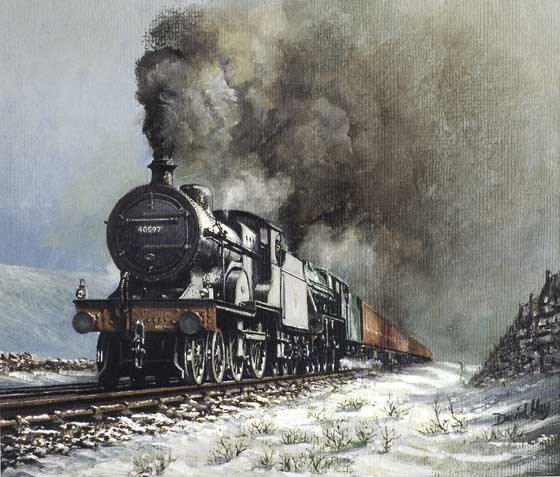
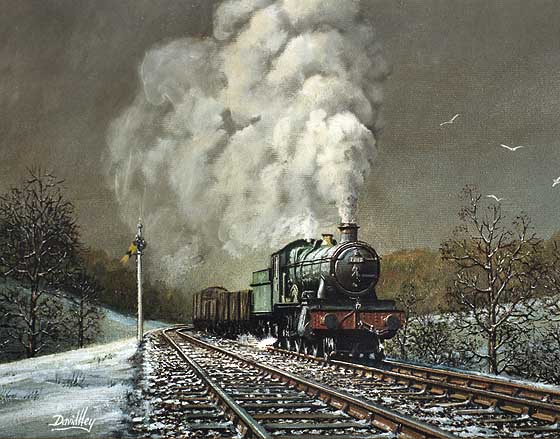
(Below) Staying with childhood influences, the B/W line drawings by AN Wolstenholme, who signed his work with the initials ANW, were more than page-fillers to me, they were simply brilliant! His painting for a BR poster appears at the top of this page, but ANW is perhaps best known for the artwork he produced for the covers of Ian Allan abc Locospotter books during the Fifties. He makes it look so simply - it isn't! I tried the same technique to do a number of covers for Model Railway Societies' annual exhibition catalogues, including this one (below right) of A4s at Peterborough, but my efforts at so-called 'simple' line drawing never came anywhere near close to the great man's.

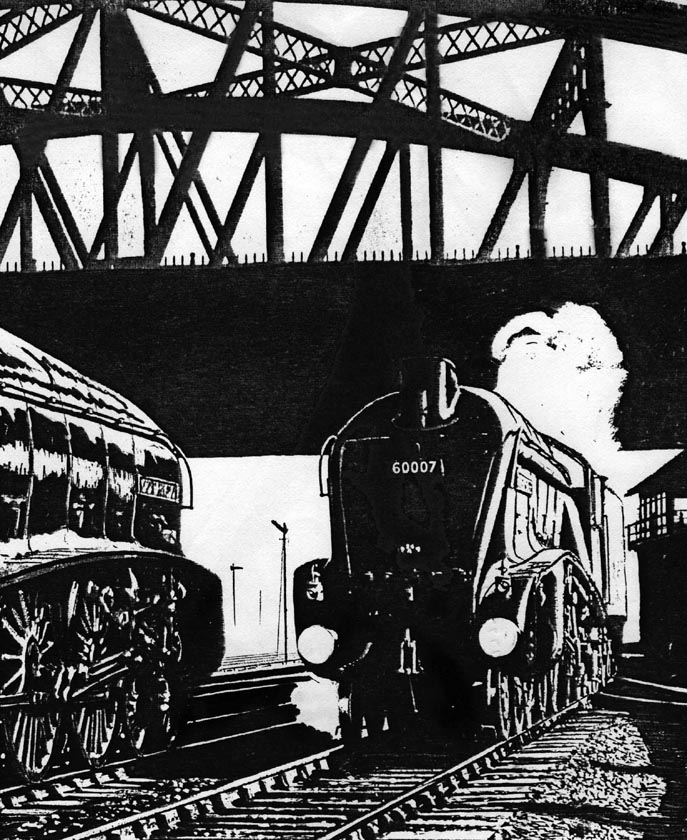

(Above-Below) Two more examples of ANW's artwork on the covers of Ian Allan's famous abc Combined Volumes. Full marks to the company's design team - the abc titles were real eye-catchers! (Below) Over the years, one artist came to prominence, whose flamboyant brushwork took my breath away... and he seemed to get better and better as the years went by! The late Terence Cuneo is undoubtedly the 'master', a name synonymous with railway paintings, though there were other great artists too - the crisp style of David Shepherd and the precision of George Heiron immediately spring to mind. They all had a huge impact on children, producing superb pictures for the covers of books and catalogues, and fine art prints. The cover of the Triang TT catalogue is unmistakably Cuneo's work. The 3mm TT gauge was produced by the Rovex company from 1957 to the mid-Sixties. Click on link to 'Triang.org.uk

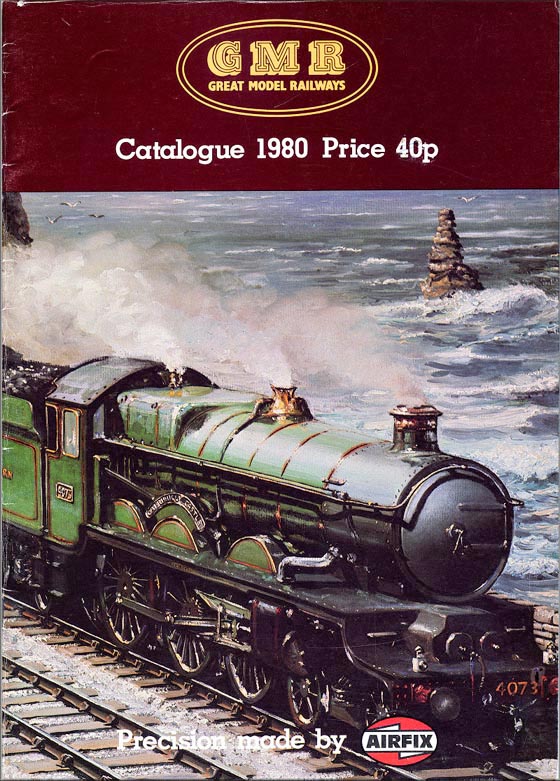
(Above Right) It always strikes me as odd that model railway manufacturers employ an artist to illustrate their models rather than using a more accurate photograph. I'm sure modellers would have preferred to see the actual model than an artists' interpretation.
I mention this because in 1980 Airfix GMR asked me to illustrate the cover of their latest catalogue that coincided with the launch of the company's new 'Cornish Riviera Limited' set. This included a 'Castle class No 4073 Caerphilly Castle accompanied by a set of 'Centenary Riviera' stock, introduced by the Great Western Railway in 1935 to celebrate the hundredth anniversary of its incorporation. Since both models of the loco and stock were significant, it ruled out the normal three-quarter view, hence the composition was bound to be a problem…how do you fit the criteria into a vertical format? 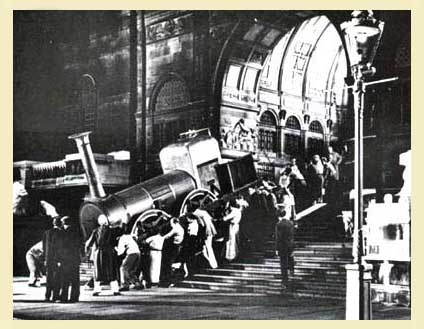 Now I don't pretend to be the best artist in the world - on the contrary, I'm a rail enthusiast first and foremost, with a penchant for painting pictures, yet even I knew the painting was going terribly wrong!
Now I don't pretend to be the best artist in the world - on the contrary, I'm a rail enthusiast first and foremost, with a penchant for painting pictures, yet even I knew the painting was going terribly wrong!
To tell the truth, rather than start another I pressed on, all the while trying to adopt Cuneo's flamboyant technique with splashes of paint here and there until the loco was glinting in places where the sun didn't shine!
As a result, the finished painting didn't look anything like I intended, and it taught me a valuable lesson…whatever it is you're doing if things start to go wrong, stop immediately and start again. Click link to visit 'Airfix Railways.org.uk'
For train spotters, the best loved film during the Fifties was 'The Titfield Thunderbolt' made in 1953 by Ealing Studios - the studio's first colour picture. It tells the story of a small group of protesters making a stand against the faceless bureaucrats of British Railways; indeed the Titfield villagers will go to any lengths to prevent closure of their local branch line, even 'borrowing' an engine (Lion) from the local museum. The film was shot on location on the now-closed ex-GWR Camerten branch which ran through the beautiful Cam Valley just south of Bath.
In many ways, the film gave us a foretaste of things to come in the Beeching era during the 1960s - a decade that saw the rise of those apolitical crusaders for the Campaign for Nuclear Disarmament (CND) - and, of course, the steam versus diesel debate, which had a profound effect on train spotters throughout the country.
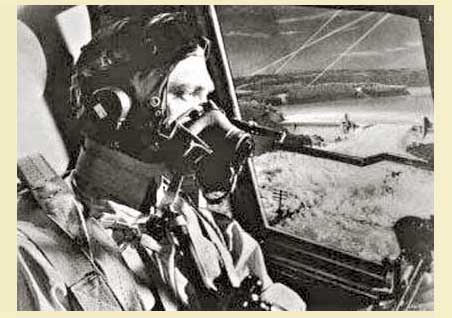 Back in the Fifties, the Second World War was still fresh in people's minds, so it was only natural that many films featured the conflict with Germany. 'The Dam Busters' told the story of the daring low-level bombing raids over the Ruhr and Eder valleys in the industrial heart of Germany.
Back in the Fifties, the Second World War was still fresh in people's minds, so it was only natural that many films featured the conflict with Germany. 'The Dam Busters' told the story of the daring low-level bombing raids over the Ruhr and Eder valleys in the industrial heart of Germany.
Led by Wing Commander Guy Gibson (played by Richard Todd) the 617 Squadron succeeded in blowing open the dams Moehne, holding 134 million cubic feet of water, and Eder, with 202 million cubic feet.
Of course, you could always tell when a youngster had been to see the film; he would emerge from the cinema, blink at the daylight, then to the accompaniment of Eric Coate's theme music still pounding in his head, stretch out his arms and pretend to be a Lancaster bomber on an imaginary raid over the local rec.
(Below) In commemoration of the Dam Busters Raid, preserved Lancaster Bomber 'City of Lincoln' flies between the twin towers of Derwent Dam in Derbyshire, reviving memories of the rehearsal runs prior to the bombing raid on the Ruhr Valley in 1943.

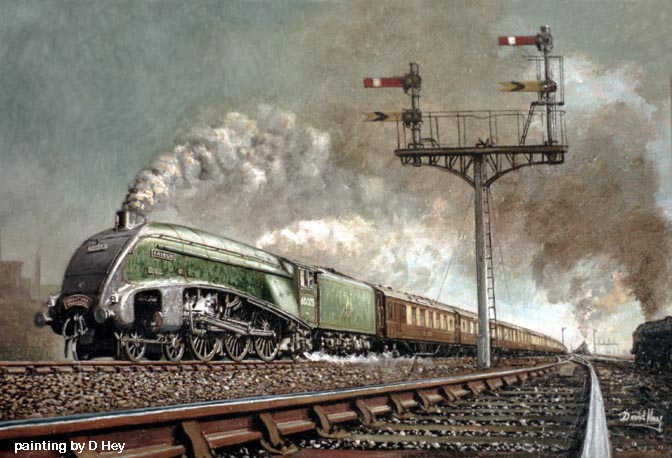
On a lighter note, the biggest influence in the Sixties came from the medium of television, since most of our memories have their roots in what we saw on TV. We witnessed the building of the Berlin Wall; the frame-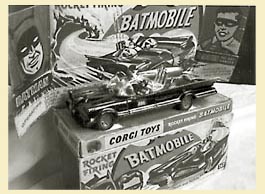 by-frame scrutiny of President JF Kennedy's assassination in Dallas, Sir Alf Ramsey's stiff upper-lipped celebrations after England won the World Cup and Neil Armstrong's first steps on the moon.
by-frame scrutiny of President JF Kennedy's assassination in Dallas, Sir Alf Ramsey's stiff upper-lipped celebrations after England won the World Cup and Neil Armstrong's first steps on the moon.
Meanwhile, in Gotham City, Commissioner Gordon is in urgent talks on the Batphone to the cape crusader.
The Joker is threatening to destroy City Hall with a gooey slime.
Back at millionaire Bruce Wayne's luxury mansion, Batman's teenage protégé, Robin, slams gloved fists together in anger, 'Holy grease nipples!' he gasps - 'That dastardly Joker is a horrible slimeball!'
Bruce Wayne pauses wistfully for a long moment - 'You're right, Robin. To the Batcave - and quickly! The good citizens of Gotham City are in a sticky situation!'
Okay, I made the dialogue up, but the deadpan humour and corny fight sequences - Zap! Kapow! Crunch! Sock! made the 1966 series part of TV legend. It also created a host of TV merchandise including this rocket-firing Batmobile introduced by Corgi.
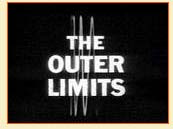 In 1963, a series of sci-fi anthologies, 'The Outer Limits' was first aired on British TV...
In 1963, a series of sci-fi anthologies, 'The Outer Limits' was first aired on British TV...
'There is nothing wrong with your television set,' droned a deep voice from the corner of our living room - 'Do not attempt to control the picture. We are controlling transmission. We will control the vertical...we can change the focus to a soft blur or sharpen it to a crystal clarity. We will control all you see and hear!'
And they did!...scary. But not as scary as the 'BOOM-BANG-A-BANG YEARS!: In the days before television turned us into a nation of couch potatoes, the local cinema was the 'in' place to go. The majority of films had a certain feel-good  factor (big-budget musicals mainly) but Hollywood also made its fair share of 'x'-rated alien-invasion movies (sparked off by the Communist threat).
factor (big-budget musicals mainly) but Hollywood also made its fair share of 'x'-rated alien-invasion movies (sparked off by the Communist threat).
The scariest films for me, though, showed the deadly effects of radiation which somehow transmogrified even the most placid nuclear physicist into a crazed mutant. It imbued a lot of people with a genuine fear of nuclear power which still exists today. Odd then, that the mushroom-shaped clouds billowing above nuclear test sites looked strangely beautiful in a perverse sort of way - but beautiful they were not. They were a constant reminder that thousands of missile systems were in a perpetual state of readiness on both sides of the Atlantic, and in the event of a nuclear strike there'd be no collateral damage - the bomb would take out everything...
THE CHANGING WORLD: The song and dance routines in 'The Black & White Minstrel Show' (1958-1978) gave the BBC one of its biggest hits - a Saturday-night variety show which regularly topped 18 million viewers. It even won the coveted 'Golden Rose' award in 1961.
Alas during the early days of television, the 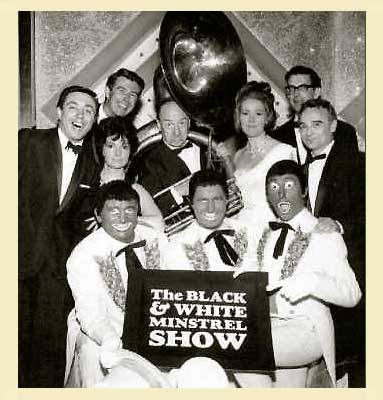 'blacking up' of white performers right (photo © Radio Times) was not widely regarded as discriminatory, but by the 1970s the implications of caricaturing black people (when there were few representations of black people on television) eventually led to the show's demise. It clearly illustrates how racial representations have become part of public debate in recent years.
'blacking up' of white performers right (photo © Radio Times) was not widely regarded as discriminatory, but by the 1970s the implications of caricaturing black people (when there were few representations of black people on television) eventually led to the show's demise. It clearly illustrates how racial representations have become part of public debate in recent years.
But the Black and White Minstrel Show was not the only victim of the politically-correct brigade. Britain can be justifiably proud to be a multicultural society, but the fear of causing offence to ethnic groups has led to cencorship on an epic scale.
Isn't that why the makers of Robertson's jam felt obliged to drop their famous Golliwog logo? Or why the nameplates of Class A4 No 60009 Union of South Africa were substituted for Osprey during the Commonwealth Games in Edinburgh?
Even 'Star Trek' was ruled offside! Captain Kirk's original opening message in which he says (I've italicised the offensive word) - 'to boldly go where no man has gone before' - was altered to - 'where no one has gone before'.
Now is it me, or is the world going stark raving mad? Its almost as if political correctness is turning this country into a right old nanny state...and it just goes on and on! We seem to have a national genius for creating dotty disorder.
At the risk of sounding off again, why does today's media offer such meaningless role models for kids to follow? The self-absorbed lifestyles of minor celebrities makes it difficult for kids to distinguish between self-gratification and 'real' happiness. Besides, I'm a lot older nowadays, and the word 'grumpy' - often so loosely applied to the older generation - certainly rings true with me. People in my age group wish they could turn the clock back to the less-worldly days when children's television was still in its infancy and less gimmicky than the 'flash-bang-wallop' techniques adopted by today's producers. Is it any wonder that a child's 'attention span' is zilch nowadays?
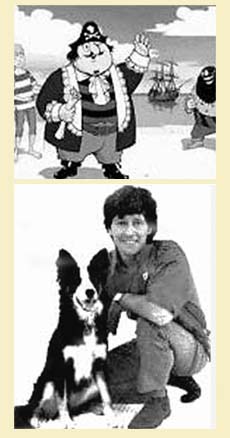 Starting as a strip cartoon in 'Eagle' comic, the podgy skipper Captain Horatio Pugwash, made his TV debut in 1957 and regularly clashed with the notorious black-bearded pirate, Cut Throat Jack - cut throat? Scary stuff for pre-school kids. And I'm amazed at how the dubiously-named Master Bates got past the censors! Still the animated series remained a firm favourite with children right up until 1965, ranking alongside 'Magic Roundabout', 'Paddington Bear' and 'The Wombles' as cult TV classics.
Starting as a strip cartoon in 'Eagle' comic, the podgy skipper Captain Horatio Pugwash, made his TV debut in 1957 and regularly clashed with the notorious black-bearded pirate, Cut Throat Jack - cut throat? Scary stuff for pre-school kids. And I'm amazed at how the dubiously-named Master Bates got past the censors! Still the animated series remained a firm favourite with children right up until 1965, ranking alongside 'Magic Roundabout', 'Paddington Bear' and 'The Wombles' as cult TV classics.
The BBC's long-running 'Blue Peter' remains another popular series. Shown twice weekly, the Blue Peter charity appeals have passed into television legend. The idea of persuading children to collect anything from old clothes and stamps to aluminium cans and milk bottle tops helped raise money for thousands of worthwhile causes, including the restoration of Class A2 Pacific No 60152 Blue Peter at Doncaster Plant. Over the years, the coveted Blue Peter badge and presenters Valerie Singleton, Peter Purvis and John Noakes - not forgetting Shep, the sheepdog - left an indelible mark on millions of Sixties youngsters. Here Class A2 No 60532 Blue Peter basks in the sunshire at Haworth on the Keighley & Worth Valley Railway. Click on photo to visit the excellent 'North Eastern Locomotive Preservation Group's' website.
 So what were you doing in the 1950s? For me, post-war lifestyles are best exemplified by the New Musical Express's 'Top Ten' pop chart, as it provides a more accurate barometer of contemporary attitudes than many history books. For example, the cosy world which had been passed down through generations was about to change in 1955 when Bill Haley and The Comets burst upon the scene. The film 'Rock Around the Clock' was a major landmark, bringing teenage hysteria to cinema aisles, but quite how an ageing, avuncular singer with a gimmicky cowlick quiff (kiss curl) could incite British kids to dance in the aisles at their local picture house is something of a mystery. But it was all about his music: a driving rhythm and blues dance beat, combining country, gospel and jazz - the rest, as they say, is rock 'n' roll history.
So what were you doing in the 1950s? For me, post-war lifestyles are best exemplified by the New Musical Express's 'Top Ten' pop chart, as it provides a more accurate barometer of contemporary attitudes than many history books. For example, the cosy world which had been passed down through generations was about to change in 1955 when Bill Haley and The Comets burst upon the scene. The film 'Rock Around the Clock' was a major landmark, bringing teenage hysteria to cinema aisles, but quite how an ageing, avuncular singer with a gimmicky cowlick quiff (kiss curl) could incite British kids to dance in the aisles at their local picture house is something of a mystery. But it was all about his music: a driving rhythm and blues dance beat, combining country, gospel and jazz - the rest, as they say, is rock 'n' roll history.
TELEVISION ADVERTISING.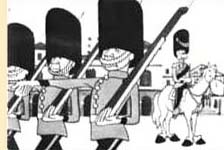 'You'll be a little lovelier each day'...'You'll wonder where the yellow went…' No prizes for guessing the brand of soap and toothpaste!
'You'll be a little lovelier each day'...'You'll wonder where the yellow went…' No prizes for guessing the brand of soap and toothpaste!
During the Fifties and Sixties, television commercials were often more popular than the programmes! If you remember Joe, the tongue-tied Esso Blue paraffin salesman who called himself the 'Esso Blee Dooler' then you'll remember the dancing shirts in the Rael-Brook ad.
The first commercial to be seen on TV was for Gibbs SR toothpaste in September 1955. It was followed by ads for Lux, Guinness, Surf, National Benzole, Summer County margarine, Batchelor's peas and Brillo. In that same year the Snap' crackle, pop' and 'Too-good-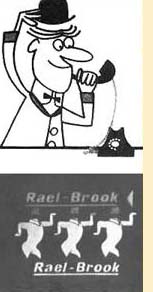 to-hurry-mints' jingles began, and a year later, the 'Don't forget the fruit gums, mum!' and PG Tips chimps commercials first appeared.
to-hurry-mints' jingles began, and a year later, the 'Don't forget the fruit gums, mum!' and PG Tips chimps commercials first appeared.
In 1957, OXO's Katy cooked a slap-up meal with 'man appeal', the Egg Marketing Board urged the nation to 'go to work on an egg' and 'A Mars a day helped us work, rest and play'.
By 1961 the Fairly Liquid -'Now hands that do dishes' and Cadbury's Milky Bar Kid adverts made their debut, then in 1962 came the Stork Margarine Challenge and the sophisticated 'After Eight' dinner parties, followed in 1964 by the Esso tiger campaign.
The list goes on and on. Remember the whispering  'Sshh!.- you know who!' and 'BO' campaigns? Some advertisers tried every trick in the book to boost sales. Take the daredevil chap who climbed over rooftops and jumped out of helicopters to deliver boxes of chocolate - 'and all because the lady loved Milk Tray?'
'Sshh!.- you know who!' and 'BO' campaigns? Some advertisers tried every trick in the book to boost sales. Take the daredevil chap who climbed over rooftops and jumped out of helicopters to deliver boxes of chocolate - 'and all because the lady loved Milk Tray?'
Meanwhile, a pokerfaced Clement Freud told us that Henry, his canine friend, preferred Chunky dog food, yet most top breeders recommended Pedigree Chum (according to the makers).
Perhaps the catchiest jingle of the decade came in 1969 when the Beanz meanz Heinz commercials began. And the biggest flop? It has to be the 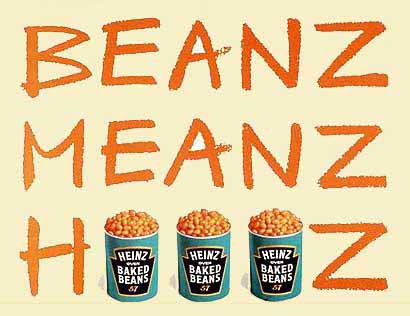 1960 campaign for Strand cigarettes, then costing 3/2d for a packet of twenty. In the days before the Government stubbed out tobacco advertising in August 1965, the ad's slogan -'You'll never be alone with a Strand' - featured a melancholy-looking guy played by Terence Brook. The theory behind the brand's failure was the fear of ending up as lonely as the chap in the commercial!
1960 campaign for Strand cigarettes, then costing 3/2d for a packet of twenty. In the days before the Government stubbed out tobacco advertising in August 1965, the ad's slogan -'You'll never be alone with a Strand' - featured a melancholy-looking guy played by Terence Brook. The theory behind the brand's failure was the fear of ending up as lonely as the chap in the commercial!
So television didn't always work wonders, then? - well, it did for Double Diamond in 1968. If you love TV nostalgia, then the fantastic BBC's cult TV is one of the best sites on the internet.
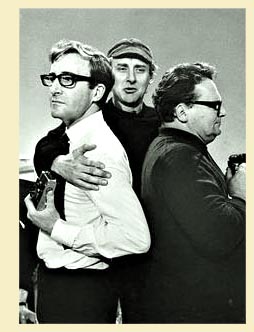 More memory jerkers! By far the biggest influence of the Fifties was the wireless. The BBC's Home Service provided news and drama whilst the Third Programme broadcast classical music, drama and sport and the Light Programme offered mainstream entertainment.
More memory jerkers! By far the biggest influence of the Fifties was the wireless. The BBC's Home Service provided news and drama whilst the Third Programme broadcast classical music, drama and sport and the Light Programme offered mainstream entertainment.
This included the adventures of special agent, Dick Barton, and the everyday stories of country folk in 'The Archers'. Among the most popular family programmes were the sci-fi voyages of Doc and Mitch in 'Journey into Space' and the rousing 'Wakey-Wakey' call at the start of Billy Cotton's Sunday lunchtime show.
We chuckled at the weekly lampooning in 'Ray's a Laugh'; 'Round the Horn'; Whacko!', Wilfred Pickles and Arthur Askey plus the bombastic Jimmy Edwards, who anchored 'Take It From Here', featuring the comic-love-birds Ron and Eth in 'The Glums'.
The list of radio funnymen goes on and on - including the legendary 'Goon Show'. On 15th September 1956, the Goons entered the pop charts with the craziest lyrics...'Ying tong yiddle I po' (Ying Tong Song). For the record, 1956 was a good year in the charts for Elvis Presley too - his top ten hits included 'Heartbreak Hotel' (May) 'Blue Suede Shoes' (May) and 'Hound Dog' in September...
AND WHO SAYS THE FIFTIES WAS DULL!
Polite notice: All text and photographs are protected by copyright and reproduction is prohibited without the prior consent of the © owners. If you wish to discuss using the contents of this page the email address is below. Please note - this is not a 'clickable' mail-to link via Outlook Express. You will have to email manually.
dheycollection@ntlworld.com

